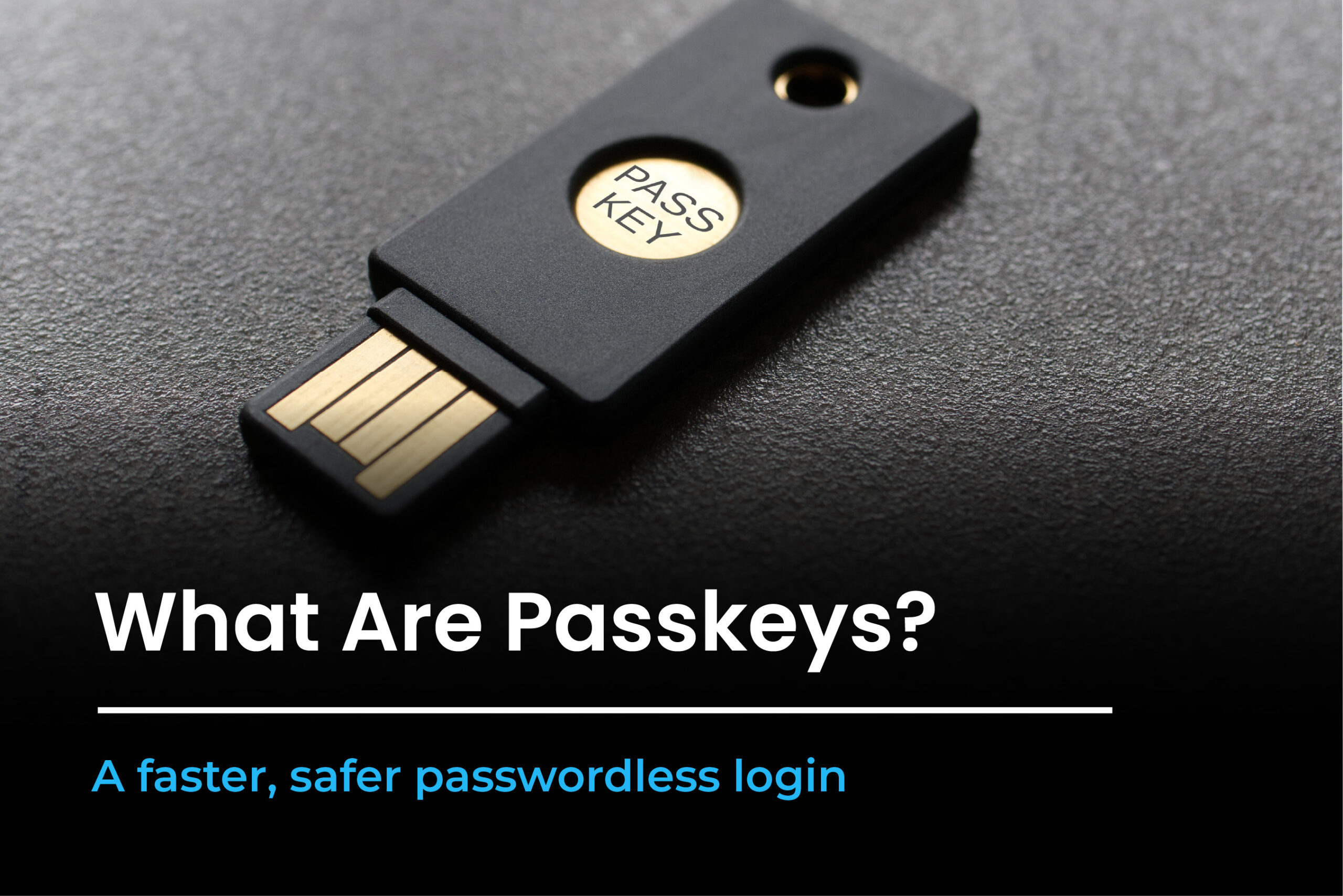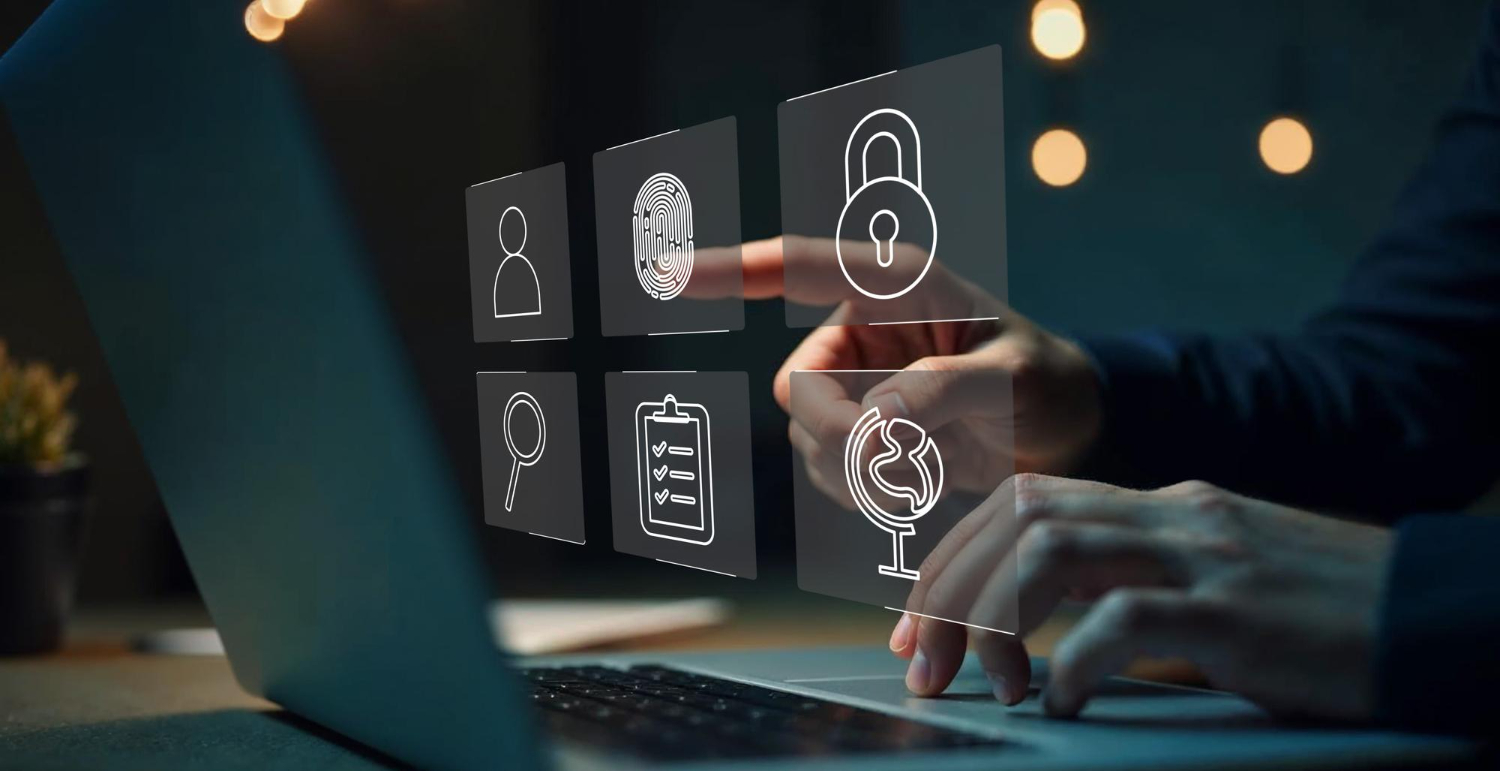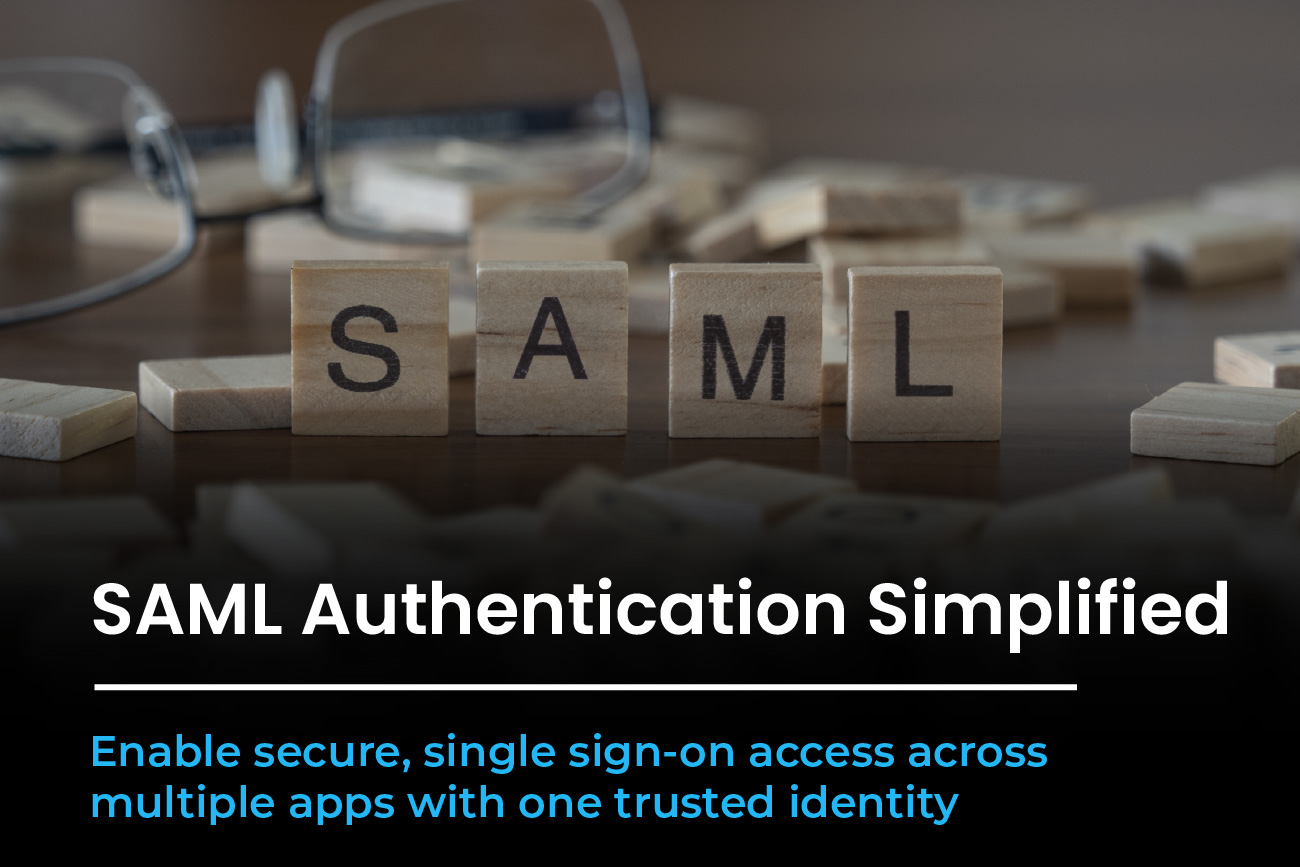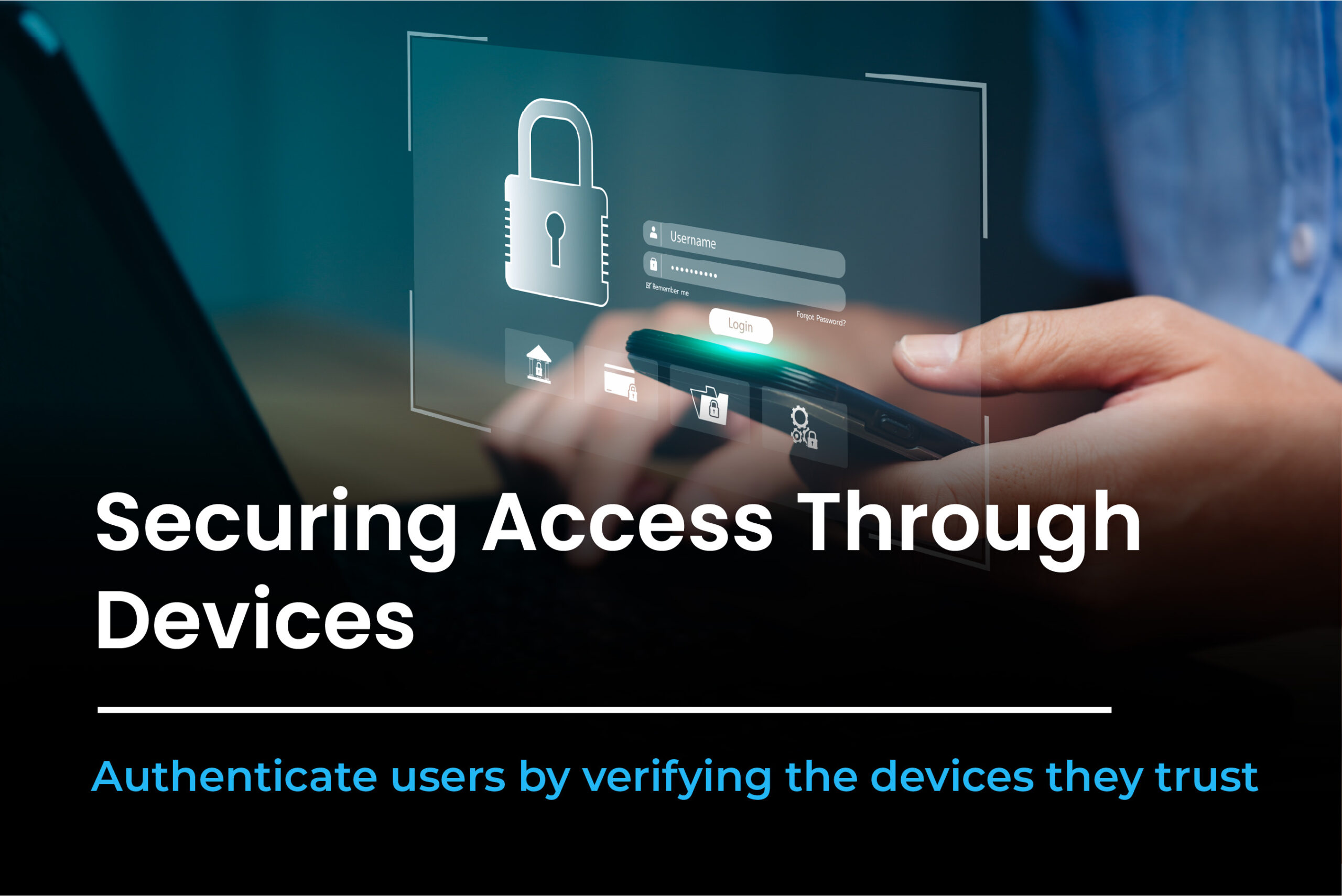Every few years, the way we sign in to our digital lives shifts. We move from short, simple logins to complex password rules, then to two-factor authentication, and now we hear about passkeys. If you’ve found yourself wondering what are passkeys, you’re not alone. We’ve had the same conversations with colleagues, friends, and IT teams who want a clear answer beyond hype.
This article explains what is a passkey, how it works, why it matters, and whether it’s safer than what we’re used to.
The Problem with Passwords
Passwords were never meant to carry the weight they do today. Most of us reuse them, forget them, or write them down somewhere unsafe. Hackers know this, which is why stolen passwords are still the number one-way accounts get compromised. Even strong passwords can fall victim to phishing emails or large-scale data breaches.
The bottom line? Passwords put too much responsibility on the user, and that’s why the industry is moving toward something better.
What is a Passkey?
Simply said, a passkey is a modern alternative to passwords that makes use of public-key cryptography. When you log in to the service, one key verifies your identity, while the other key stays hidden on your device. It cannot be guessed, reused, or stolen in a data breach, unlike passwords.
The industry’s move toward passwordless authentication, which is changing security standards internationally, includes this option.
How Does a Passkey Work?
The simplest answer to this question is that cryptographic pairings are required. The public key is held by the service you log into, and the private key is stored on your device. The service uses the public key to validate the challenge that the private key signs when you log in.
No secret is transmitted, which makes phishing nearly impossible. This also answers another common question: how passkey authentication works in real-world use. Since you don’t have to type or remember anything, it’s safer and more seamless than passwords.
If you’ve heard of passkeys and assumed they’re just another catchphrase, you now understand that they represent an invaluable shift in identity verification. This is passkeys explained in the simplest terms: cryptography replaces memorization.
Creating and Using Passkeys
If you’ve never tried one, creating a passkey is surprisingly simple. Most devices prompt you automatically when you log in to a compatible service. You’ll usually verify yourself with Face ID, Touch ID, or a PIN, the same way you already unlock your phone.
From that moment, the passkey is stored securely on your device. When you come back to the app or website, you just use your fingerprint or face scan again instead of typing a password. No sticky notes, no “forgot password” forms.
What Devices are Compatible with Passkeys?
Passkeys work across most modern devices and operating systems. Apple, Google, and Microsoft have already built support into iOS, Android, Windows, and macOS. That means if you’re carrying the latest smartphone or laptop, chances are you’re already passkey-ready.
The only real limitation today is with older hardware or outdated software that doesn’t support the latest authentication standards.
Where Are Passkeys Used Today?
Passkeys may sound new, but adoption is moving quickly. Tech giants like Apple, Google, and Microsoft are already leading the way:
- Apple uses passkeys in iCloud Keychain, enabling logins across devices with Face ID or Touch ID.
- Google supports passwordless login with passkeys for Gmail, YouTube, and other accounts.
- Microsoft offers passkey sign-ins through Windows Hello; a type of hardware passkey built into its devices.
Beyond these, more banks, retailers, and SaaS platforms are rolling out support each month. We’re still in the early stages, but the growing list of compatible services shows that passkeys aren’t just a concept, they’re quickly becoming the new standard for login security.
Why Passkeys Matter?
So, what are passkeys and how do they work in the real world? The answer is tied to security fatigue. Complex password regulations, forced resets, and managing several logins are all annoying.
You can use passkeys instead of writing down your login information or keeping it on a sticky note under the keyboard. You utilize your phone’s face scan, fingerprint, or PIN, which you already use on a regular basis, to authenticate.
This makes passkey authentication both more secure and far less frustrating. It also helps organizations reduce password reset tickets, a huge cost saver for IT teams.
Passwords vs Passkeys
Let’s talk about passwords vs passkeys directly. Here’s a simple comparison:
Passwords are knowledge-based, meaning you must create, remember, and type them.
Passkeys are possession-based. They stay on your device and can be unlocked with your fingerprint, face, or PIN.
Passwords can be phished, stolen, reused, or guessed.
Passkeys resist phishing and don’t get reused because each one is unique to the account.
How are Passkeys Better Than Passwords?
The easiest way to understand the difference is to think about effort and risk. Passwords require you to remember something and that something can be stolen or guessed. Passkeys, on the other hand, live securely on your device and unlock with biometrics you already use.
That makes them:
- Less stressful to manage (no memorization)
- Safer against phishing and credential theft
- More seamless for everyday logins
It’s not just about stronger security; it’s about making login feel invisible.
Advantages and Disadvantages of Passkeys
It’s worth looking at the advantages and disadvantages of passkeys in detail.
Advantages of Passkeys
- Stronger security: Built on cryptographic keys rather than human-created passwords.
- Simpler login: Works with face scans or fingerprints.
- Lower IT burden: Fewer password reset requests.
- Future-focused: Moves toward full passwordless login.
Disadvantages of Passkeys
- Device dependency: You need your phone or device handy.
- Compatibility: Some platforms and apps haven’t adopted it yet.
- Learning curve: Users still ask what passkeys are because it’s unfamiliar territory.
Passkey Security: Are Passkeys Safe?
People continue to raise the same question whenever we explain this: Are passkeys secure? It’s a valid concern. After years of breaches, hacks, and phishing efforts, we’ve learned to be cautious.
Here’s the good news: passkey security is based on FIDO2, a battle-tested standard. Because no secrets are written or exchanged, phishing attacks lose their effectiveness. Even if you are tricked into visiting a bogus login site, your passkey will not work.
That does not mean they are unbreakable, but they vastly outperform regular passwords.
Where can passkeys be used?
The short answer: almost anywhere a password is used today. Adoption is already strong in personal accounts like email, banking, and cloud storage, where people want both speed and safety. Tech giants like Apple, Google, and Microsoft are proving that passkeys work seamlessly across devices.
But the real shift will happen inside workplaces. Employees often juggle dozens of logins a day, and every reset ticket drains IT resources. Passkeys not only cut down on phishing risks but also remove the daily friction of remembering complex passwords. That combination of stronger security and smoother access makes them especially powerful in enterprise environments, where efficiency and protection carry equal weight.
How to use Passkeys?
If you want to try them yourself, here’s the process most services follow:
- Log in to an app or website that supports passkeys.
- When prompted, choose “Create a passkey.”
- Verify yourself with Face ID, Touch ID, or your phone’s PIN.
- The passkey is saved, and next time you’ll log in with biometrics instead of typing a password.
It’s almost too simple, which is why people who try it rarely want to go back.
Password Managers and Passkeys
Many people ask whether they’ll still need a password manager once they move to passkeys. The answer is yes, at least for now. While passwordless authentication is the goal, most apps and services have yet to catch up.
So, we’ll live in a hybrid world of password management plus passkeys for a while. The good news is that most major password manager tools are already adapting to support both.
Will Passkeys Replace Passwords?
Naturally, the next question is: Will passkeys completely replace passwords? Yes, eventually. However, it will take years before every platform, service, and organization uses them.
We are currently in the transition phase. Businesses are experimenting with passwordless login, and customers are using their phones and web browsers to experience it in small ways.
However, the future is evident: passkeys will replace passwords to increase security and convenience on a large scale.
Making Passkeys Part of Your Long-Term Security Strategy
Organizations can’t just flip a switch and go passwordless overnight. Instead, IT leaders should see passkeys as part of a bigger journey. For the next few years, businesses will need to support both passwords and passkeys while employees adjust.
That makes planning critical: training users, updating policies, and ensuring compatibility across platforms. The sooner you start, the easier it will be to move fully passwordless down the road.
Start using passkeys with AuthX
If you’re looking for a practical way to roll out passkeys across your workforce, AuthX makes the transition easier. With built-in support for passkeys, adaptive MFA, and endpoint-aware policies, AuthX helps you replace weak logins without disrupting users.
It’s not just about adopting a new login method; it’s about building a secure, passwordless future with the right platform.
Final Thoughts
We’ve all struggled with traditional passwords, from forgetting them to resetting them at the worst times. Passkeys represent the next chapter: secure, simple, and built for a passwordless authentication future.
The more we’ve investigated it, the clearer it has become. The industry isn’t asking what passkeys are anymore; it’s asking how fast we can move to adopt them. And from where I stand, that’s a good problem to have.
FAQs
Define passkey, how passkey authentication works?
A passkey is a secure digital credential stored on your device. If you try to define passkey simply, it’s a safer replacement for typed passwords that uses cryptographic keys instead of text.
How do passkeys work in practice?
Think of it like unlocking your phone. Your device verifies you locally with a face scan, fingerprint, or PIN, then uses a private key to prove your identity to the app or website.
Can you define a passkey in simple terms?
Yes. If we define a passkey, it replaces traditional passwords that use cryptographic keys instead of text-based logins.
Will passkeys replace passwords completely?
Yes, but not overnight. It will take time for apps and businesses to adopt them fully.
How do they work for businesses?
For enterprises, passkeys simplify login, reduce IT workload, and provide stronger defenses against phishing and credential theft.
What are Hardware passkeys?
Hardware passkeys are physical security keys (like USB or NFC) that store private keys securely. Tap or insert them to authenticate, adding strong protection for high-risk accounts.















